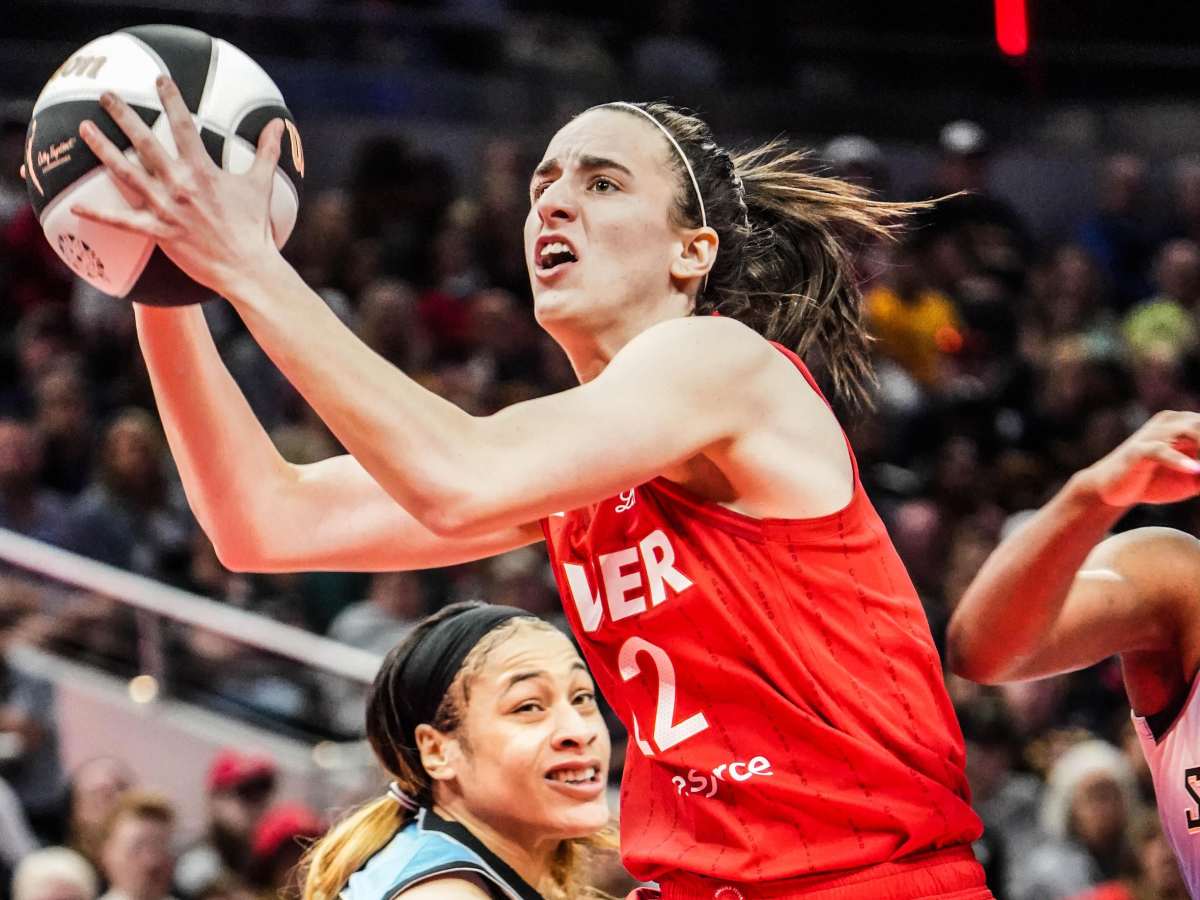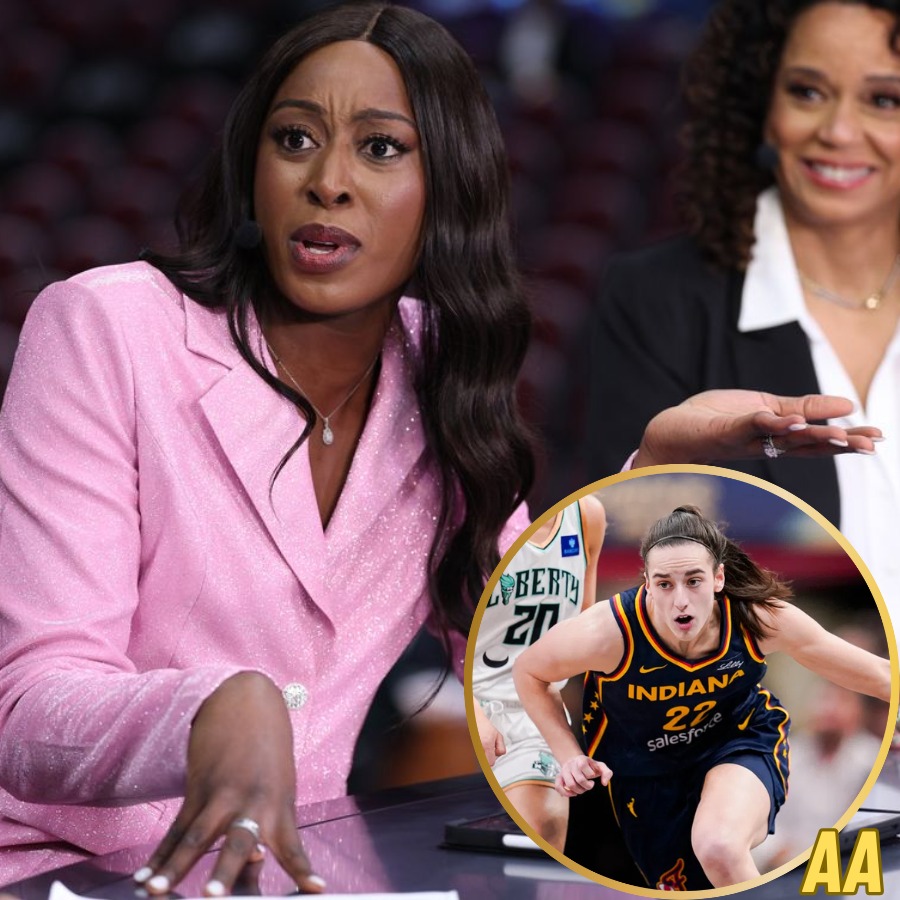Chiney Ogwumike Speaks Out on Caitlin Clark and Challenges WNBA Media Narratives
In the ever-evolving landscape of professional basketball, both the NBA and WNBA have consistently been platforms for athletes to showcase their skills, break barriers, and spark discussions that transcend the sport itself.
Recently, WNBA star and ESPN analyst Chiney Ogwumike made headlines for her candid remarks about rising basketball sensation Caitlin Clark and her pointed critique of prevailing media narratives surrounding the WNBA.
Ogwumike’s comments have ignited conversations across social media and sports journalism, highlighting key issues within the sport’s coverage and representation.
The Rise of Caitlin Clark: A Phenomenon in College Basketball
Caitlin Clark, a standout guard for the University of Iowa, has captivated audiences with her exceptional talent, court vision, and scoring ability.

Her performances have not only elevated her team but also drawn comparisons to some of basketball’s all-time greats.
Clark’s ability to dominate games with deep three-pointers, precise passing, and unwavering confidence has made her one of the most talked-about players in college basketball today.
Chiney Ogwumike, who is no stranger to elite-level basketball herself, recently weighed in on Clark’s meteoric rise during a segment on ESPN.
As a former No. 1 overall WNBA draft pick and two-time All-Star, Ogwumike’s insights carry significant weight in the basketball community.
She praised Clark’s skillset and competitive spirit, emphasizing how players like her are reshaping the way fans perceive women’s basketball.
“Caitlin Clark is a generational talent,” Ogwumike remarked.
“She’s not just putting up numbers; she’s changing the narrative around what women’s basketball can look like. She’s inspiring the next generation of players and fans to see the game differently.”
Addressing Media Narratives Surrounding the WNBA
While Ogwumike celebrated Clark’s impact on the sport, she also took the opportunity to critique broader media narratives surrounding the WNBA.
As both an active player and media personality, Ogwumike has had a front-row seat to the challenges faced by the league in gaining mainstream recognition and respect.
One of her key points was the disparity in coverage between men’s and women’s basketball.

Despite the WNBA featuring world-class athletes who consistently deliver high-quality performances, media attention often pales in comparison to that given to their male counterparts.
Additionally, when the league does receive coverage, it is sometimes framed in ways that fail to fully capture the depth of its talent and competitiveness.
“There’s this perception that the WNBA is somehow secondary to the NBA or college basketball,” Ogwumike explained
. “But if you actually watch the games, you’ll see elite athletes competing at the highest level. The problem is not with the product; it’s with how it’s being presented.”
Ogwumike went on to challenge stereotypes that have persisted in sports media for years.
She argued that these narratives not only undermine the accomplishments of WNBA players but also limit the league’s ability to grow its fan base.
The Role of Athletes in Shaping Public Perception
As a prominent voice within both the WNBA and sports media, Ogwumike has been instrumental in advocating for change.
She frequently uses her platform to highlight the achievements of her peers while calling out inequities in coverage and representation.
Her dual role as a player and analyst gives her a unique perspective on how narratives are constructed—and how they can be dismantled.
One of Ogwumike’s strategies has been to emphasize storytelling.

She believes that sharing personal stories about athletes’ journeys, struggles, and triumphs can help humanize them and connect them with fans on a deeper level.
By focusing on individual narratives rather than generic coverage, media outlets can foster greater appreciation for the league and its players.
“For people to care about the WNBA, they need to know who these players are—not just as athletes but as people,” Ogwumike said.
“We have incredible stories in this league. It’s time for those stories to be told.”
Bridging Generations: The Impact of Rising Stars Like Caitlin Clark
Ogwumike also touched on how emerging stars like Caitlin Clark could play a pivotal role in bridging gaps between different levels of women’s basketball.
Clark’s popularity as a college player has already brought significant attention to women’s sports, and her eventual transition to professional basketball—whether in the WNBA or elsewhere—could serve as a catalyst for greater interest in the league.
“Players like Caitlin Clark are crucial for the future of women’s basketball,” Ogwumike noted.

“She has the ability to draw fans who might not have watched women’s games before. The key is ensuring that momentum carries over when she reaches the professional level.”
This sentiment aligns with broader discussions about how college basketball stars can help elevate the WNBA.
By leveraging their existing fan bases and building on their reputations as dynamic players, athletes like Clark can help attract new audiences to professional women’s basketball.
The Path Forward: Changing Media Coverage and Public Perception
Ogwumike’s comments underscore the need for systemic change in how women’s sports are covered by mainstream media.
While progress has been made over the years—with increased visibility during major events like the WNBA Finals—there is still much work to be done.
One potential solution lies in diversifying media representation.
By including more voices like Ogwumike’s—those who intimately understand the nuances of women’s basketball—media outlets can provide more accurate and engaging coverage.
Additionally, investing in marketing campaigns that highlight the league’s stars and rivalries can help generate excitement among casual viewers.
Another avenue is leveraging digital platforms and social media. These tools have already proven effective in amplifying underrepresented voices and connecting athletes directly with fans.
By embracing innovative approaches to storytelling and engagement, the WNBA can continue building its presence in an increasingly digital world.
A Call for Action
Chiney Ogwumike’s candid remarks about Caitlin Clark and WNBA media narratives serve as both a celebration of talent and a call for change.
Her praise for Clark highlights the transformative power of young athletes to inspire and redefine perceptions of women’s basketball.
At the same time, her critique of media coverage underscores ongoing challenges that must be addressed to ensure equitable representation for the league.
As conversations around these topics continue to unfold, one thing remains clear: athletes like Ogwumike are not only shaping the game on the court but also driving important discussions off it.
Their voices are essential in pushing for progress and ensuring that women’s basketball receives the recognition it deserves.
With rising stars like Caitlin Clark capturing national attention and seasoned veterans like Chiney Ogwumike advocating for change, the future of women’s basketball looks bright.
But achieving its full potential will require collective effort—from players, fans, media outlets, and stakeholders alike—to challenge outdated narratives and celebrate the excellence that defines this sport.
